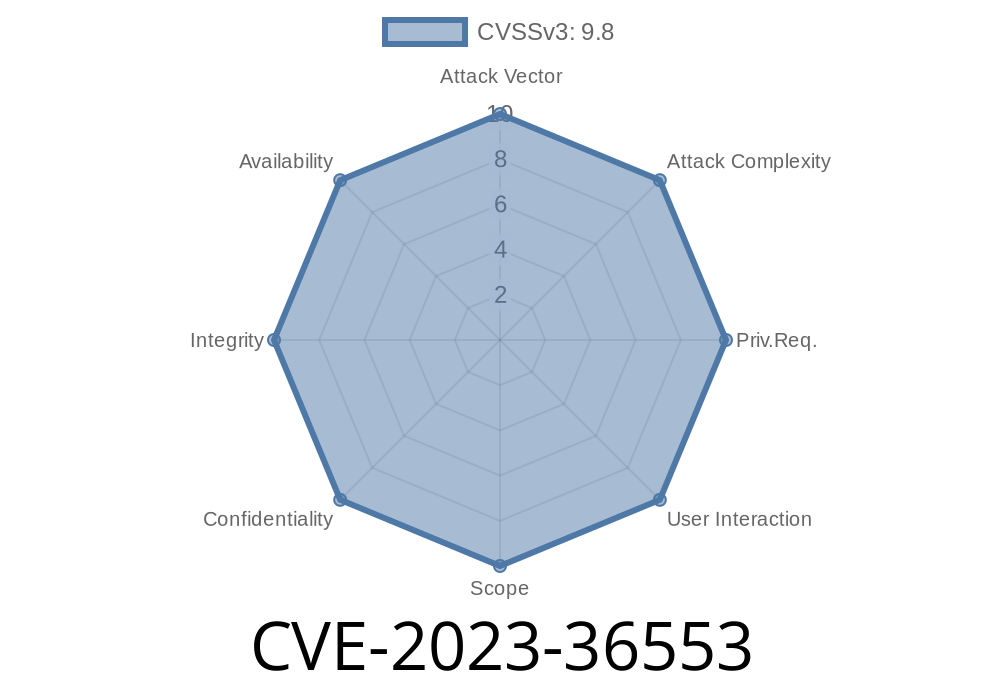A recent security vulnerability, identified as CVE-2023-36553, has been discovered in Fortinet FortiSIEM, affecting versions 5.4., 5.3. to 5.3.3, 5.2.5 to 5.2.8, 5.2.1 to 5.2.2, 5.1. to 5.1.3, 5.. to 5..1, 4.10., 4.9., and 4.7.2. This critical bug is caused by the improper neutralization of special elements used in operating system (OS) commands, also known as "OS command injection". Attackers can potentially exploit this vulnerability to execute unauthorized code or commands through specially crafted API requests.
Vulnerability Details
The OS command injection vulnerability allows an attacker to inject malicious commands into an application, causing it to execute those commands on the server. In the case of Fortinet FortiSIEM, the affected versions fail to properly neutralize special elements within the OS commands, thereby rendering them vulnerable to such injection attacks. The attacker can execute unauthorized code through crafted API requests, potentially gaining unauthorized access and control over the application or the underlying system.
Code Snippet
To better understand the vulnerability and its potential impact, let us consider a hypothetical example of what an exploitation attempt might look like:
GET /api/vulnerability?cmd=name"ls%20-la HTTP/1.1
Host: target_fortisiem_server
Authorization: Basic [base64_encoded_credentials]
In the example above, the attacker sends a crafted API request where the "cmd" parameter value includes special characters, like backticks, to execute the ls -la command on the server. If successful, the server would execute the injected command and potentially return sensitive data to the attacker.
Original References
Fortinet has acknowledged the vulnerability and has released a security advisory with specific details, available at the following link:
- Fortinet Security Advisory
The CVE-2023-36553 was assigned to this vulnerability for further reference
Exploit
At the time of writing, there are no known public exploits available for CVE-2023-36553. However, it is essential to keep systems updated and ensure that appropriate security measures are in place, as this is a critical vulnerability with the potential for significant consequences.
Mitigation
Fortinet has issued patches for the affected versions and urges users to update their installations to resolve the vulnerability:
Other affected versions, please refer to the Fortinet advisory
Updating to the latest versions ensures that the vulnerability is patched, and the risk of unauthorized command execution is mitigated. Additionally, users should follow best security practices such as strong authentication and access control mechanisms, and proper network segmentation to minimize the potential impact of any future vulnerabilities.
Conclusion
CVE-2023-36553 is a critical vulnerability in Fortinet FortiSIEM, caused by improper neutralization of special elements within OS commands. This could allow attackers to execute unauthorized code and potentially gain control over the application or the underlying system. Fortinet has acknowledged and patched the affected versions, and users are strongly advised to update their installations and follow best security practices to minimize the risk of exploitation.
Timeline
Published on: 11/14/2023 18:15:48 UTC
Last modified on: 11/20/2023 20:06:00 UTC
